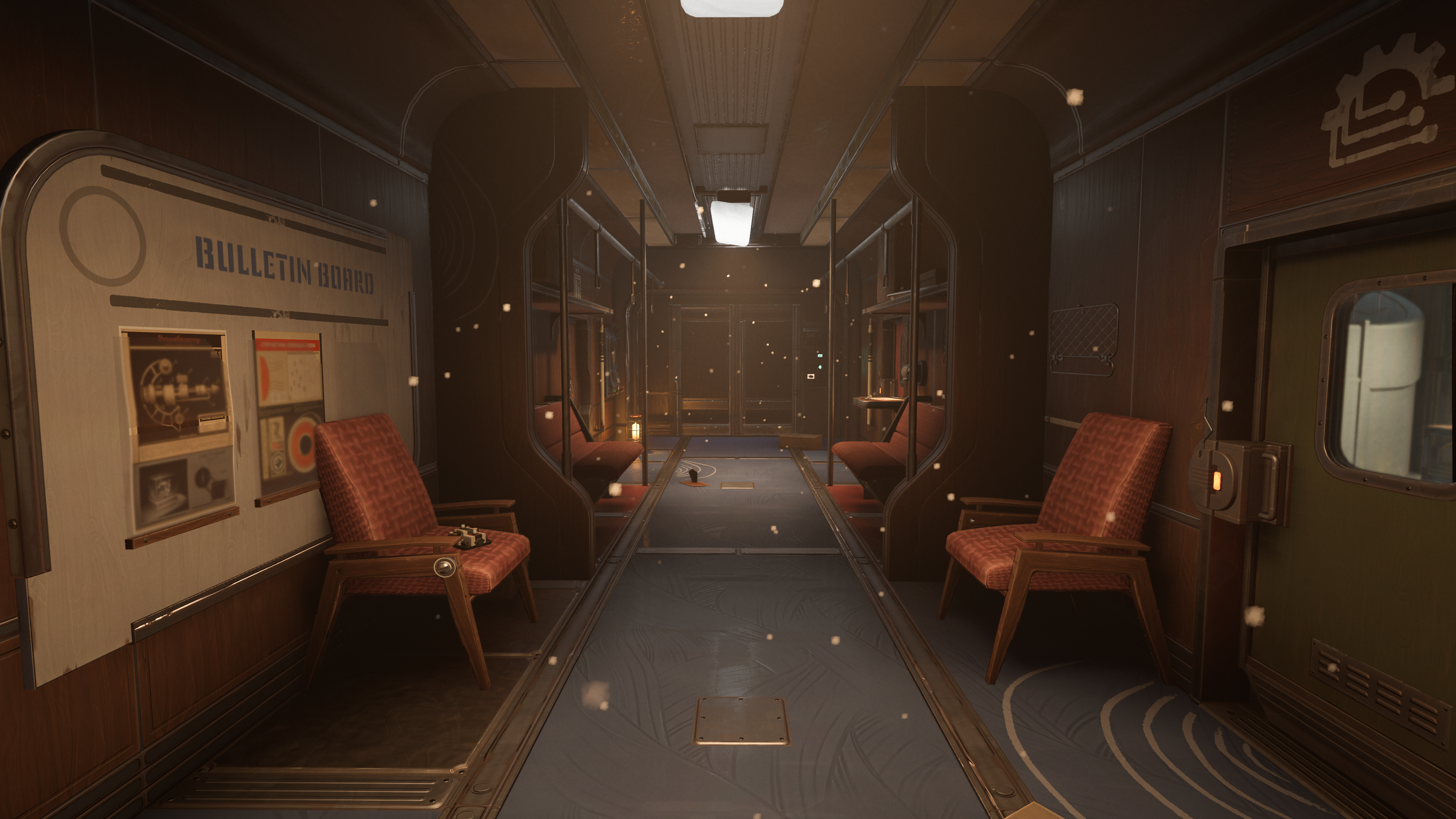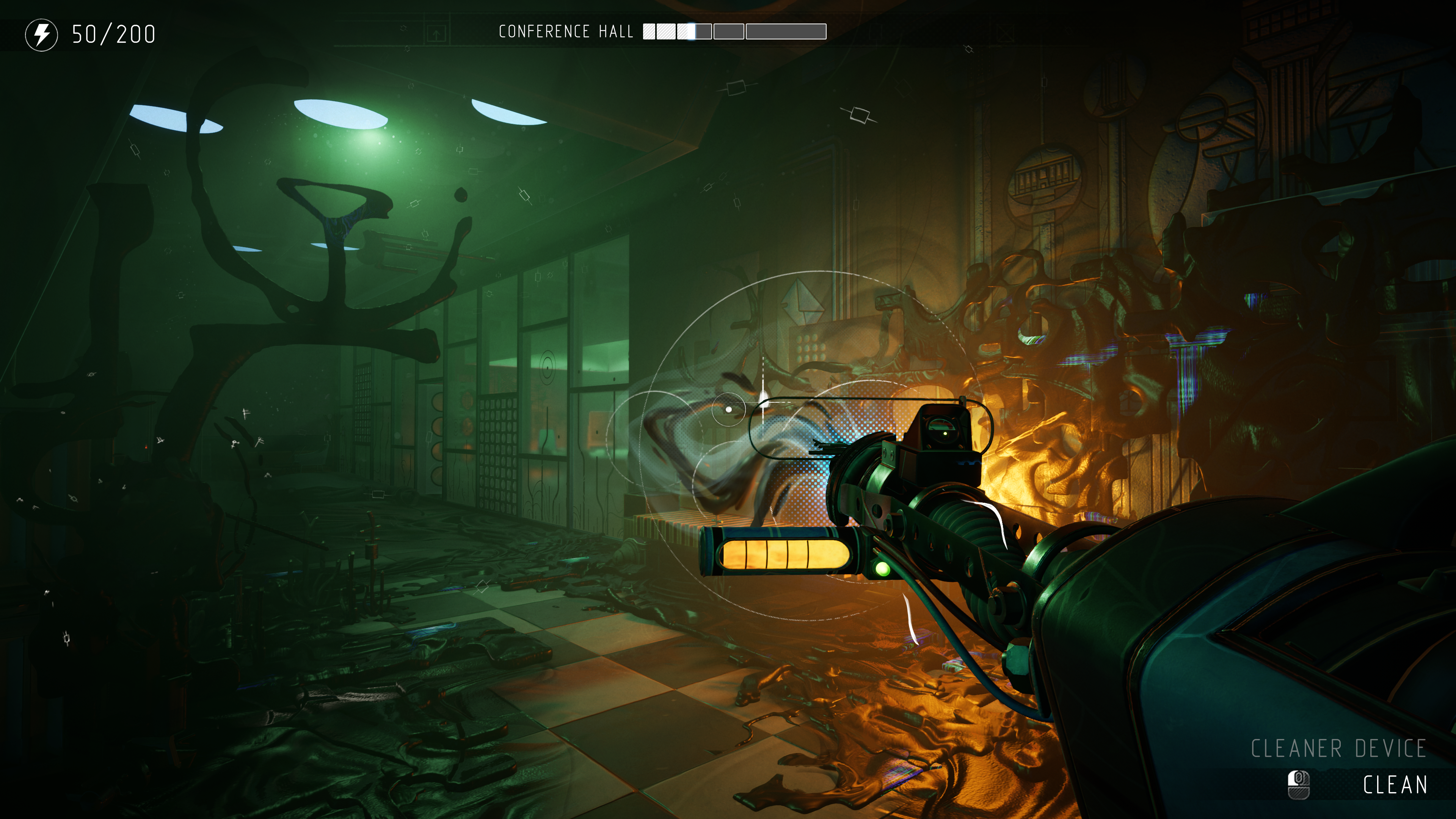Handyman simulators are tough to get into for many people. The games are often just lists of tasks to be done arbitrarily, and you end up with a finished product that’s nice but ultimately uninteresting. While these sorts of chore-style games are appealing to the right audience, there’s never been one that’s caught my eye. I find the tasks too repetitive and simple, providing menial gameplay that is likely relaxing for many but just isn’t my cup of tea. Keep this in mind when I say that, despite being a handyman simulator, The Lift might quickly become one of my favorite games of all time.
Videos by ComicBook.com
The Lift is a newly-announced game from tinyBuild and Fantastic Signals, the publisher and developer, respectively. Fantastic Signals, a new indie studio, is comprised of veteran developers from titles like Ori and the Will of the Wisps, with years of game-making prowess in their arsenals, while tinyBuild is responsible for games like Pathologic 2, Clustertruck, and Hello Neighbor.
Together, they’ve made what is already shaping up to be an incredible game, drawing inspiration from Soviet sci-fi writers Boris and Arkady Strugatsky to create a retrofuturistic sci-fi setting packed with character, mystery, and charm. In this game, you become the Keeper of the Lift, repairing the functions and restoring order to the wrecked research station while also uncovering the truth behind the horrible Incident that’s left it in ruins.
Two Star-Studded Teams Come Together to Create a Wonderful Game
Both Pathologic 2 and Ori and the Will of the Wisps are iconic on their own rights—Pathologic for its strangely disparate world setting and Ori for its sensational game design and story—and it’s clear in The Lift that no one involved has lost their touch. I’ve only played the alpha build of the game, so I can’t speak to the quality of the story overall, but even in its early alpha state, The Lift‘s setting and story are convincing from minute one.
Its environment features truly bring the space to life, even without the presence of other characters, and piecing together the story of what happened to the Institute happens naturally. The Fantastic Signal team has pulled together a world that is both new and familiar—pulling aesthetics from 70’s sci-fi and blending them seamlessly with their own retrofuturistic concepts.
The Lift Effortlessly Creates a World Based on Soviet Sci-fi With Beautiful ’70s Flair

In a pre-alpha interview, Fantastic Signals’ Founder Ivan Slovtsov discussed the game’s design, explaining that the team was visually inspired by media like Prey, House Flipper, and even Stranger Things, combining aspects of each of these properties along with their own special flair. The result is a cohesive but entirely unique game that delighted me from the get-go. It’s a game that believes the message it’s sending, and it’s all the more powerful for it.
During that same interview, Slovstov spoke on the possibility of there being violent enemies in The Lift, as one of the main obstacles players face is an SCP-like anomaly that must be cleared away. He explained that, “Pathologic [2] was a game about everyone dying, we wanted The Lift to be the opposite of that.”
Slovstov continued, “We wanted it to have a bright feeling, of you being proud of your work and making it better…The anomalies are there…you have to find ways to deal with them, but no one will try to bite off your head.” This is a game about improvement, about celebrating and bringing life to something long dead and abandoned. Its message is clear, and its unique voice permeates the game from the very beginning.
Not many games can do this, but I even enjoyed The Lift‘s tutorial, wherein you’re introduced to the mechanics of the game via robot-instructed practice repairs. At the same time, you’re reminded that the purpose of humans is to work, and a human without work is a human without purpose. This tongue-in-cheek line of dialogue is on-the-nose, but lighthearted enough to be a poignant, silly piece of satire. Through clever dialogue and intricate environmental storytelling, The Lift integrates players into its world, seemingly effortlessly.
It’s the Little Details That Matter, and The Lift Nails Them

It’s true that The Lift features impressive worldbuilding and even more impressive visual design, but what really sold me on it was the little details. The diegetic tutorials—teaching players how things work with in-game posters and how-tos—only serve to further immerse you into its world. Alongside the already impressively detailed world are the controls: snappy, responsive, and on just the right side of cartoonish to sell their movements.
In many handyman and immersive sims, getting the controls right can be difficult. These games often build entire worlds that the players has to invest in, and making sure flipping a switch feels “right” just isn’t a priority for most devs. As it turns out, Fantastic Signal aren’t most devs. The controls in The Lift are incredible—honestly, the game is as close to VR as a PC game can get without actually being VR. Every movement feels real, grounded in the physicality of the movement and punctuated by snappy audio and charming visual effects. The actions of renovation and repair are foundational to The Lift, and Fantastic Signal has shown them the attention they deserve.
Ultimately, The Lift is a game about bringing life back to the Institute one room at a time. Like the player character in Pathologic 2 was a doctor healing a town, so too is the player of The Lift healing the Institute, showing as much care and compassion for the broken space as a doctor would their patient. While the ethos of many post-disaster games focus on the normalization of the world falling apart, The Lift‘s world is one in which the “new norm” is the promise that things can be better.









